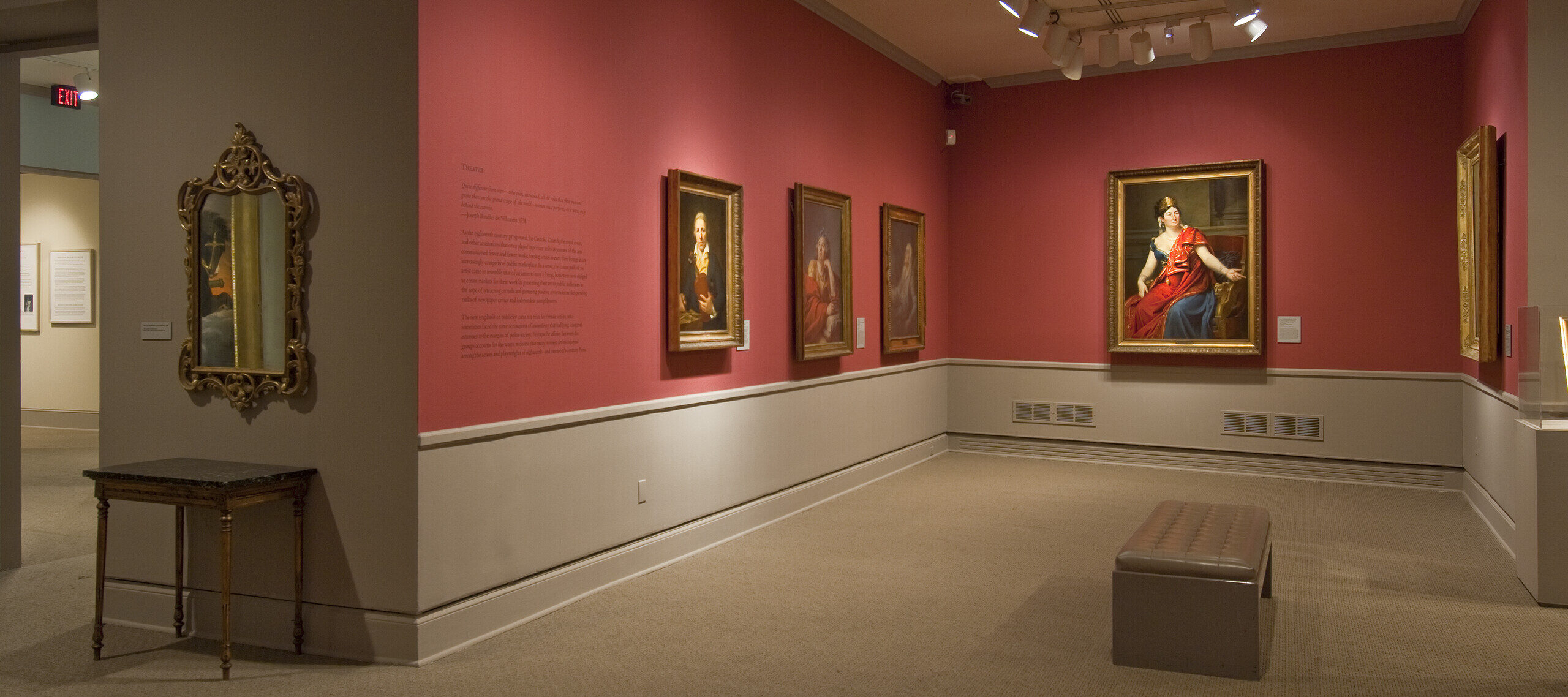In Royalists to Romantics: Women Artists from the Louvre, Versailles, and Other French National Collections, 77 works by 35 artists display the talents of French Revolution-era women artists. Their paintings are windows into their careers and the singular challenges of their time. The catalogue that NMWA has published to illustrate Royalists to Romantics includes essays as well as individual artist biographies that give insight into the lives of women artists working in France between 1750 and 1848. This excerpt explores the life of one the show’s featured artists, Angélique Mongez.

Angélique Mongez was the first Frenchwoman to lay full claim to the title of history painter.1 She entered the studio for women of Jean-Baptiste Regnault (1754 – 1829) in the early 1790s; she later became a student of Jacques-Louis David (1748 – 1825), and remained closely linked to him throughout her career.2 Mongez produced copies of his works (at his request), included the phrase “student of David” (élève de M David ) in a painted signature in 1806, and is said to have been responsible for the underpainting on his 1809 Sappho and Phaon (State Hermitage Museum, Saint Petersburg). David’s 1812 double portrait (Musée du Louvre, Paris) of Angélique and her husband, the antiquarian and director of the Mint, Antoine Mongez, testifies to their friendship, as does David’s apparent placement of the couple among his own family in the audience of his Coronation of Napoléon and Joséphine (1807) (Musée du Louvre, Paris).3 When David suffered financial hardships, the Mongez family lent him money. And in 1824, during David’s exile, Mongez joined with two of his male students to orchestrate an exhibition of David’s Mars Disarmed by Venus (Musées royaux des beaux-arts, Brussels), completed that year.

Mongez exhibited at the Salons regularly from 1802 until 1819, and participated in one final Salon in 1827. For her 1802 debut she presented a painting of Astyanax Torn from the Arms of His Mother. The tragic episode, from Euripides’ The Trojan Women, ends with the child Astyanax being hurled to his death from the walls of Troy. At the next Salon, in 1804, Mongez was awarded a gold medal for her painting of Alexander Mourning the Death of the Wife of Darius. The work included in the current exhibition, Mars and Venus (1841), is generally believed to be an autograph copy of a painting sent to the Salon in 1814. However, Margaret A. Oppenheimer speculates that it may be the same canvas with a tunic added to the figure of Mars, who was nude in the 1814 version.4
Mongez’s paintings enjoyed mixed receptions: some critics compared them unfavorably to those of David, whereas others saw them as evidence that women could succeed in the most masculine of genres. In either case, Mongez’s reputation was inextricably tied to the rarity of her position as a female history painter working in the idiom of Davidian classicism.
Notes
1. This biography is based on Margaret Fields Denton, “A Woman’s Place: The Gendering of Genres in Post-Revolutionary French Painting,” Art History 21, no. 2 (June 1998), pp. 219 – 46; Gen Doy, “Hidden from Histories: Women History Painters in Early Nineteenth-Century France,” in Art and the Academy in the Nineteenth Century, ed. Rafael Cardoso Denis and Colin Trodd (Manchester, 2000), pp. 71 – 85; Gen Doy, Women and Visual Culture in Nineteenth-Century France, 1800 – 1852 (London and New York, 1998), pp. 95 – 129; and Margaret A. Oppenheimer, “Women Artists in Paris, 1791 – 1814” (PhD diss., New York University, 1996), pp. 238 – 42.
2. In addition to the sources cited above, see also Mary D. Sheriff, “Jacques-Louis David and the Ladies,” in Jacques-Louis David: New Perspectives, ed. Dorothy Johnson (Newark, de,2006), p. 105.
3. Philippe Bordes, Jacques-Louis David: Empire to Exile, exh. cat. (New Haven, 2005), p. 156.
4. Oppenheimer, “Women Artists,” p. 242, n. 430.
